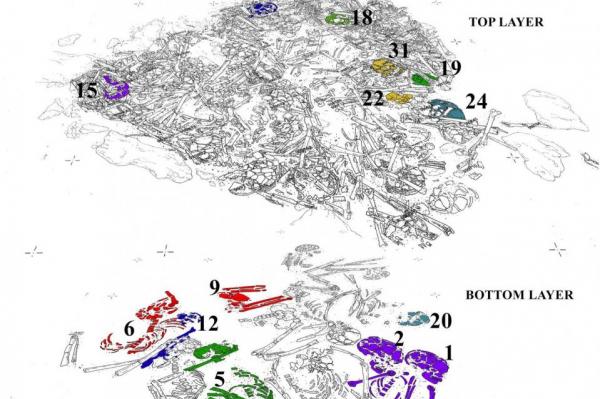
BILBAO, Spain, Jan. 20 (UPI) — A collective burial site in Spain offers evidence of mankind’s evolving sense of community.
The 6,000-year-old megalith suggests the closely-related community valued their social cohesion enough to be buried together, as opposed to individually.
The megalith is detailed in a new study — published in the journal PLOS ONE — which employs archaeological analysis, genetics, isotope analysis and bone analysis to offer one of the most in-depth looks at a Neolithic burial site in Spain.
Researchers discovered and analyzed the remains of 47 adults and adolescents at the megalith tomb, located at the Neolithic site known as Alto de Reinoso in Northern Spain, south of Bilbao. The Stone Age farmers were buried together over the course of 100 years.
“The skeletal remains exhibited a moderate number of pathologies, such as degenerative joint diseases, healed fractures, cranial trauma, and a low intensity of caries,” researchers wrote in the new study.
Genetic analysis showed the older remains, layered on the bottom, were more closely related. They also showed that family members were sometimes laid to rest side by side.
Strontium isotope ratios proved that only a few of the community’s earliest children grew up in a different location, with the majority of the remains belonging to those born and raised in Alto de Reinoso. Carbon and nitrogen isotope levels suggest the community primarily farmed grains, with community members enjoying egalitarian access to the harvests. Their diets may have been supplemented by sheep and goats.
While the remains on the bottom layers of the tomb are arranged neatly, the remains layered above are deposited more haphazardly. The changes suggest an evolving use and conception of the tomb and the act of burial, with the majority of skeletons above the bottom layer showing signs of manipulation — missing limbs and skulls.
Researchers believe it is the first Neolithic burial site to mirror man’s changing ideas about life and death.
“All the extensive data collected, including information on life style, demographics, health status, diet and subsistence, mobility patterns as well as the genetic profile of the group fit in with the typical way of life of sedentary farming populations at this time period,” lead study author Kurt W. Alt said in a press release.
“The embracement of a collective burial chamber for the community members rather than individual graves indicates significant shifts in social identity.”






